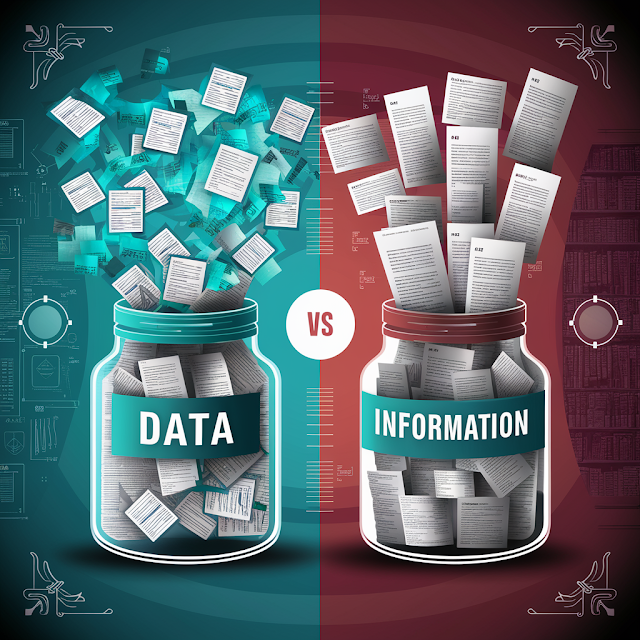What is The Difference Between Data And Information With Example ?
What is The Difference Between Data And Information With Example ?
Data and information are closely related, but there's a key distinction between them.
Here's how they differ:
Data is essentially raw, unprocessed facts or figures. It's like a pile of unorganized building blocks. By itself, data doesn't have much meaning.
For example, consider a list of numbers: 25, 32, 18, 41, 27. This is just data - individual numbers without context.
Information, on the other hand, is data that has been processed, organized, and interpreted. It adds context to the data, making it meaningful and useful. Information is like a built structure using those data blocks.
Taking the previous example, if we calculate the average of those numbers, we get 28.8. This average is information because it tells us something specific about the data set - the central tendency of the values.
In simpler terms, data is the "what" and information is the "so what".
Here's another example:
Data: My friend's temperature reading is 101 degrees Fahrenheit.
Information: My friend likely has a fever, as a normal human body temperature is around 98.6 degrees Fahrenheit.
Here are some more examples to illustrate the difference between data and information:
Finance:
Data: Stock price: $125.40 per share, Trading volume: 1 million shares.
Information: The stock price has increased by 5% compared to yesterday, indicating a potential rise in investor confidence. However, considering the relatively low trading volume, the increase might be temporary.
Weather:
Data: Temperature: 22°C, Humidity: 70%, Wind speed: 10 km/h.
Information: It's a comfortable day with a moderate temperature and a slight breeze. However, the high humidity might make it feel muggy for some people.
E-commerce:
Data: Customer ID: 12345, Purchase history: [Book A, Headphones], Location: London.
Information: Customer 12345 from London enjoys reading and might be interested in similar book recommendations. They also use electronic devices, suggesting they might be open to deals on phone cases or portable chargers.
In each example, the data provides the basic building blocks, while the information adds context and helps us understand the meaning and potential implications of that data.
